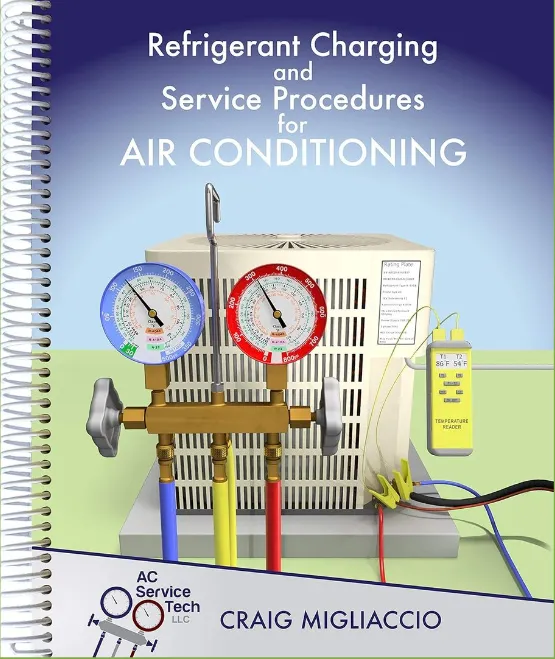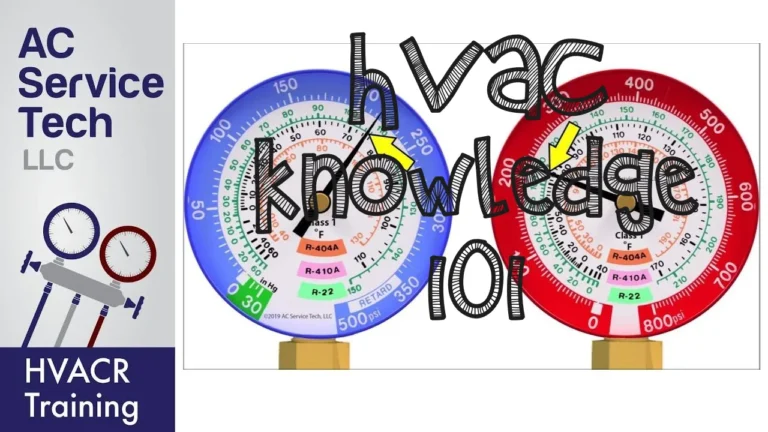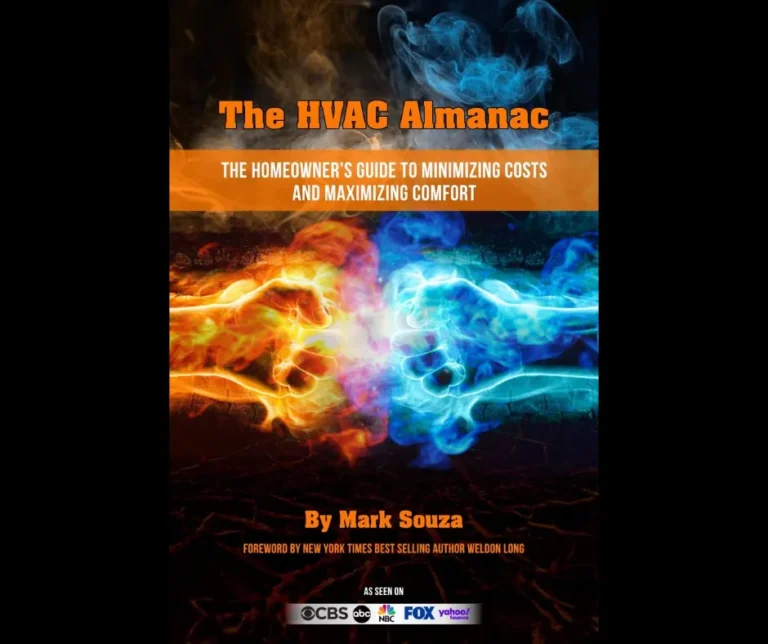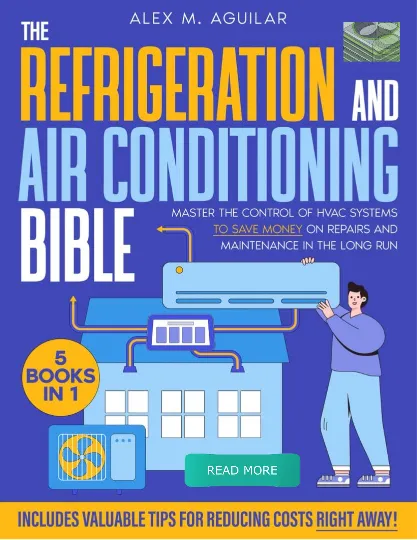HVAC Basic Knowledge
In today’s fast-paced world, understanding the fundamentals of HVAC (Heating, Ventilation, and Air Conditioning) systems is essential for both homeowners and professionals in the construction and maintenance industries.
Whether you are a homeowner looking to optimize your indoor climate or a technician seeking to enhance your skills, having a solid grasp of HVAC Basic Knowledge can significantly impact your comfort and efficiency.
This article aims to equip you with key insights into how HVAC systems operate, their components, and the importance of regular maintenance.
By familiarizing yourself with these concepts, you can make informed decisions regarding system selection, performance troubleshooting, and energy efficiency improvements.
You’ll learn about the various types of HVAC systems available, their specific functions, and how they work together to create a comfortable living environment.
Additionally, understanding common maintenance practices will empower you to prolong the lifespan of your HVAC system and reduce energy costs.
As you delve into this foundational knowledge, you will not only enhance your awareness of how HVAC systems contribute to your well-being but also gain valuable skills that can enhance your professional credibility in this vital field.
Table of Contents HVAC Basic Knowledge
Understand refrigerant charging for efficiency
Refrigerant charging is a critical procedure that directly impacts the efficiency of air conditioning systems.
When preparing an air conditioning unit for operation, it is essential to accurately measure the refrigerant charge level using a manifold gauge set.
This tool allows you to assess both the high and low-pressure sides of the system, helping identify whether the refrigerant is undercharged or overcharged.
Properly charging the refrigerant not only enhances the cooling performance but also reduces energy consumption, thus extending the lifespan of the equipment.
Effective troubleshooting practices involve closely monitoring the refrigerant levels throughout the maintenance process.
If the readings indicate a discrepancy from the manufacturer’s specifications, adjustments must be made promptly to ensure optimal functionality.
Understanding the principles of refrigerant charging and how to interpret the data from the manifold gauge set empowers you to maintain system efficiency and address potential issues before they escalate.
This proactive approach can lead to significant energy savings and improved reliability of air conditioning systems.
Master troubleshooting practices for HVAC
system performance and address potential issues before they escalate.
By systematically examining the various components of the HVAC system, you can identify signs of wear or malfunction, such as unusual noises or fluctuating temperatures.
Familiarizing yourself with common symptoms associated with refrigerant issues, such as frost on the evaporator coil or inadequate cooling, will enhance your ability to diagnose problems accurately.
When troubleshooting, always begin with a thorough visual inspection, followed by testing electrical connections and verifying component functionality.
By integrating a structured approach to your troubleshooting practices, you can effectively isolate the root cause of HVAC issues.
Regularly updating your knowledge of industry standards and best practices will ensure that you remain proficient in identifying and resolving problems, ultimately leading to enhanced service outcomes and customer satisfaction.
Prepare air conditioning systems correctly
Ensuring the proper preparation of air conditioning systems is essential for optimal performance and longevity.
Start by familiarizing yourself with the specific requirements of the system, including the appropriate refrigerant type and the manufacturer’s specifications for charging levels.
When measuring the refrigerant’s charge level, utilize a manifold gauge set to obtain accurate readings.
This equipment allows you to assess both the high and low-pressure sides of the system, enabling you to determine whether the refrigerant levels are within the optimal range.
Proper refrigerant charging is critical, as both overcharging and undercharging can lead to inefficiencies and potential damage.
Understanding the nuances of refrigerant management, along with adhering to established troubleshooting practices, will significantly improve your ability to prepare the system for operation.
Remember to prioritize safety and environmental considerations, particularly when handling refrigerants, to ensure compliance with regulations while delivering high-quality service.
Familiarize yourself with manifold gauge sets
The manifold gauge set is an essential tool for any HVAC professional, allowing you to effectively monitor and manage refrigerant pressures within a system.
As you work with this equipment, ensure that you are comfortable reading the gauges accurately, as this will directly impact your troubleshooting practices.
The gauges display both high and low-pressure readings, and knowing how to interpret these values is crucial for diagnosing issues and making informed decisions about refrigerant charging.
When preparing an air conditioning system, connect the manifold gauge set according to the manufacturer’s guidelines, taking care to avoid any potential leaks.
By regularly measuring the refrigerant’s charge level with this tool, you can identify any discrepancies that may indicate underlying problems, such as leaks or system blockages.
Mastering the use of a manifold gauge set not only enhances your technical skills but also contributes to the overall efficiency and reliability of HVAC systems.
Measure refrigerant charge level accurately
Accurate measurement of the refrigerant charge level is critical for optimal system performance and longevity.
When you read the manifold gauge set, it is essential to consider both temperature and pressure to determine the appropriate charge for the specific refrigerant type.
This practice not only involves checking the low and high-pressure gauges but also correlating those readings with the corresponding saturation temperatures.
By understanding these relationships, you can make precise adjustments, ensuring that the system operates within its designed parameters.
During the troubleshooting process, keep in mind that both undercharging and overcharging can lead to inefficiencies and potential damage to the air conditioning system.
Regularly measuring the refrigerant charge level helps you pinpoint any irregularities and allows for timely interventions.
Make it a habit to cross-reference your gauge readings with manufacturer specifications and service guidelines to enhance the reliability of your assessments and maintain effective refrigerant management.
Ensure proper refrigerant levels maintain cooling
Maintaining the correct refrigerant levels is essential for ensuring efficient cooling performance in your air conditioning system.
When preparing an air conditioning unit for operation, refrigerant charging is a critical step that must be executed with precision.
Utilizing a manifold gauge set allows you to accurately assess the refrigerant levels and make necessary adjustments.
If you find that the system is undercharged, introducing additional refrigerant can restore optimal cooling capacity.
Conversely, if readings indicate an overcharge, it is crucial to safely remove excess refrigerant to prevent compressor damage and operational inefficiencies.
In your troubleshooting practices, it’s important to recognize the signs of improper refrigerant levels, such as inconsistent cooling, increased energy consumption, or unusual noises from the system.
Regularly measuring the refrigerant charge level not only aids in diagnosing potential issues but also prolongs the life of the equipment.
By being diligent in performing these checks and adhering to manufacturer specifications, you can effectively manage refrigerant levels, ensuring your air conditioning system runs smoothly and efficiently throughout its lifespan.
Recognize common HVAC troubleshooting indicators
e of your equipment.
By familiarizing yourself with common indicators, such as fluctuating pressures on the manifold gauge set or the presence of ice buildup on evaporator coils, you can identify and address problems before they escalate.
Additionally, pay attention to the airflow; restricted airflow can signify dirty filters or ductwork, which can exacerbate cooling issues.
Monitoring these indicators diligently empowers you to take proactive steps in your HVAC maintenance approach.
Timely interventions based on your observations can lead to improved system efficiency and comfort within your space.
Ultimately, being attuned to these common troubleshooting signs enhances your ability to manage your air conditioning system effectively, ensuring that it operates smoothly throughout its service life.
Practice safe handling of refrigerants
When handling refrigerants, it is essential to adhere to safety protocols to protect both yourself and the environment.
Always ensure you are equipped with the appropriate personal protective equipment, such as gloves and goggles, when performing refrigerant charging or measuring the refrigerant’s charge level.
Familiarize yourself with the specific properties of the refrigerant you are working with, including its potential hazards and the correct procedures for safe handling.
Properly using the manifold gauge set during refrigerant charging will not only help you maintain correct pressure levels but will also minimize the risk of accidental exposure to harmful substances.
During troubleshooting practices, be vigilant about detecting leaks and managing refrigerant recovery.
Utilize leak detection methods and follow your local regulations for refrigerant disposal to ensure compliance and environmental safety.
By being methodical and cautious in your approach, you can prepare air conditioning systems efficiently while safeguarding your health and the surrounding ecosystem.
Remember that responsible refrigerant management is a critical aspect of effective HVAC operation that benefits you, your clients, and the environment.
Regularly check system performance and efficiency
Monitoring the performance and efficiency of your HVAC system is crucial for ensuring optimal functionality and longevity.
By routinely assessing various parameters, you can identify potential issues before they escalate, leading to costly repairs or system failures.
Pay close attention to the refrigerant charge level, as improper charging can significantly impact cooling efficiency.
Utilize the manifold gauge set to accurately read pressures, and address any discrepancies promptly to maintain system balance.
As you prepare an air conditioning unit for operation, ensure that all components are functioning correctly and that the refrigerants are within the manufacturer’s specifications.
Regular maintenance checks, including cleaning filters and inspecting ductwork, will further enhance efficiency.
Establishing a consistent schedule for these evaluations will not only prolong the lifespan of the system but also improve energy consumption, resulting in lower utility bills and a more comfortable indoor environment.
Stay updated with HVAC industry standards
Engaging with the latest HVAC industry standards is essential for maintaining high-quality service and compliance.
Understanding current best practices in refrigerant charging is vital for optimizing system performance and preventing refrigerant leaks, which can be both costly and environmentally detrimental.
Familiarizing yourself with troubleshooting practices can significantly enhance your diagnostic skills, allowing you to quickly identify and resolve issues that may arise during operation.
When measuring the refrigerant charge level, it’s imperative to utilize the manifold gauge set correctly, ensuring that readings are precise and reflective of the actual system conditions.
This knowledge not only aids in proper system setup but also minimizes the risk of overcharging or undercharging, which can lead to inefficiencies and potential damage to the equipment.
By continuously educating yourself on evolving industry standards and techniques, you ensure that your HVAC practices are both effective and compliant with regulatory requirements.
In conclusion, having a basic understanding of HVAC systems is essential for both homeowners and professionals in the field.
By familiarizing yourself with the key components, functions, and maintenance practices, you empower yourself to make informed decisions regarding your heating and cooling needs.
This knowledge not only helps you optimize your system’s efficiency but also prolongs its lifespan, ultimately leading to cost savings and enhanced comfort in your living space.
As you continue to learn and explore the intricacies of HVAC technology, you will gain greater confidence in managing your system and ensuring a comfortable environment year-round.







